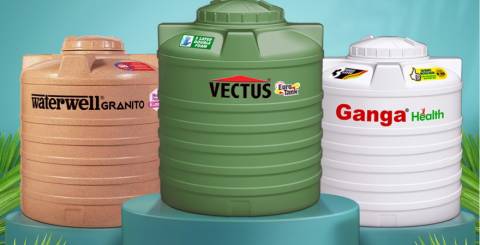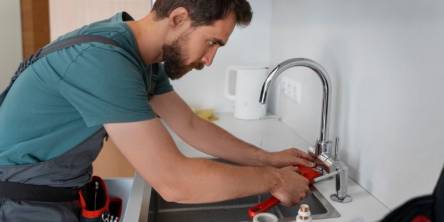How to Prevent Algae and Contamination in Your Water Tank

Maintaining a clean water supply is crucial for any household or commercial establishment. Water tanks for drinking, washing, or other uses ensure an uninterrupted water supply. However, algae and contamination can compromise the quality of stored water, leading to health risks and unpleasant odors. This article outlines practical steps to prevent algae and contamination in your water tank, ensuring clean and safe water for your home or business.
Understanding Algae and Contamination
Algae are simple, plant-like organisms that flourish in moist, nutrient-rich environments. When sunlight penetrates the water tank, it creates the perfect conditions for algae growth. Contamination, on the other hand, arises from various sources such as dirt, leaves, insects, and microorganisms. Both algae and contamination can severely affect water quality, making it unfit for consumption or other purposes.
How to Prevent Algae and Contamination in Your Water Tank
1. Choose the Right Water Tank
The first step in preventing algae and contamination starts with selecting the right water tank. A plastic water tank with UV-resistant properties is an excellent choice. UV-resistant tanks block sunlight from entering the tank, preventing algae growth. Additionally, tanks with smooth inner surfaces are easier to clean and less likely to harbor bacteria or debris.
When purchasing a tank, ensure it is from a reputable water tank manufacturer that adheres to safety and quality standards. High-quality tanks are made from food-grade materials and are less prone to leaks or cracks, reducing the risk of external contamination.
2. Install the Tank in an Appropriate Location
The placement of your water tank can significantly impact its cleanliness. Here are some considerations:
Avoid Direct Sunlight: Position your tank in a shaded area or use a cover to minimize exposure to sunlight, which promotes algae growth.
Elevate the Tank: Install the tank on a raised platform to reduce the risk of debris and pests entering the tank.
Protect Against External Contaminants: Ensure the area around the tank is clean and free from leaves, dirt, and animal waste.
3. Use a Proper Tank Cover
A tightly sealed cover is essential for keeping your water tank clean. A secure cover prevents sunlight, insects, and debris from entering the tank. Ensure the lid is durable, fits well, and is easy to remove for maintenance purposes.
4. Install a Filtration System
Adding a filtration system at the inlet and outlet of your tank is another effective way to prevent contamination. Filters trap sediments, debris, and microorganisms, ensuring that only clean water enters and exits the tank. Regularly clean or replace the filters to maintain their efficiency.
5. Regular Cleaning and Maintenance
Routine cleaning is vital for preventing algae and contamination in your water tank. Follow these steps:
Drain the Tank: Completely empty the tank to remove all water.
Scrub the Interior: Use a long-handled brush and a mild detergent to scrub the tank’s walls and floor. This helps remove algae, sediment, and biofilm.
Rinse Thoroughly: Rinse the tank multiple times to ensure no soap residue remains.
Disinfect: Add a chlorine solution to kill any remaining microorganisms. Let it sit for a few hours before rinsing again.
Inspect for Damage: Check for cracks, leaks, or any signs of wear that might compromise the tank’s integrity.
Cleaning should be performed at least twice a year or more frequently if the tank is used heavily.
6. Use Algaecides and Water Treatments
For additional protection against algae, consider using algaecides specifically designed for water tanks. These solutions are safe for human consumption and help inhibit algae growth. Always follow the manufacturer’s instructions when using chemical treatments.
Additionally, periodic water testing can help identify any signs of contamination early. Test kits are readily available and can detect bacteria, pH levels, and other water quality parameters.
7. Implement a First Flush System
A first flush system diverts the initial flow of rainwater away from the tank. This prevents leaves, dirt, and other debris from entering the tank during rainfall. Installing such a system is particularly useful for households that rely on rainwater harvesting.
8. Monitor and Maintain Pipes and Fittings
The pipes and fittings connected to your water tank can also contribute to contamination if not properly maintained. Regularly inspect and clean these components to prevent blockages, leaks, or microbial growth. Using durable and high-quality materials from a trusted water tank manufacturer can minimize such issues.
9. Educate Household Members
Everyone in the household should be aware of best practices for maintaining the water tank. Simple habits such as ensuring the lid remains closed, avoiding the introduction of foreign objects, and reporting any issues promptly can go a long way in keeping the tank clean.
10. Professional Maintenance Services
While regular cleaning and inspection can be done independently, hiring professional tank cleaning services annually ensures a thorough job. Professionals use advanced equipment and disinfectants to clean and sanitize the tank, eliminating even the most stubborn algae and contaminants.
Final Thoughts
To prevent algae growth and contamination in your water tank, it’s essential to combine proper installation, routine maintenance, and high-quality materials. Choosing a durable plastic water tank from a reputable manufacturer provides a reliable foundation for safe and clean water storage. By following these preventative measures, you can ensure that your water tank home remains a reliable and safe source of water for years to come. Remember, maintaining clean water is not just about convenience—it’s about protecting the health and well-being of your household or business.
Similar Articles
Rugs do far more than add color and texture to your floors—they define spaces, protect surfaces, and add a sense of warmth and comfort. But while many people spend time choosing the perfect rug for their home, they often overlook a key component that’s just as important: the rug pad.
Water is one of the most vital resources on our planet, and its conservation has become a global priority. As populations grow and climate patterns change, efficient water storage and management solutions are more important than ever.
Home renovation is more than just a trend; it's a way to breathe new life into your living space
In the modern age of interior design and home living, finding the perfect furniture that blends aesthetic appeal, durability, and comfort can be a daunting task.
Water leaks are one of the most damaging problems a home can face, and the most frustrating thing is that many of them aren’t immediately visible
There’s a quiet revolution happening in homes across the globe—and it starts with your windows. They may seem like simple panes of glass, but when they start to fail, they take your comfort and your wallet down with them.
Your roof shields your home from rain, sun, and debris. However, roof cleaning at regular intervals ensures that the exterior of your home always stays healthy. Moreover, it helps prevent damage caused by moss and algae. Consequently, you save on future repair costs.
Curb appeal is the first impression your home gives the world. While homeowners often focus on manicured lawns, freshly painted doors, and blooming flower beds, one essential task often gets overlooked: gutter cleaning.
We all love the magic that holiday lights bring—sparkling rooftops, glowing trees, and those warm, cosy vibes that come once a year. But here’s the twist: holiday lighting isn’t just about festivity









